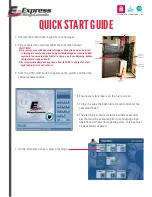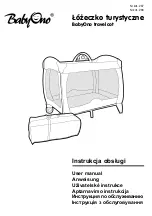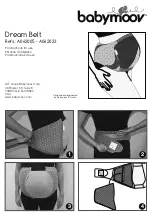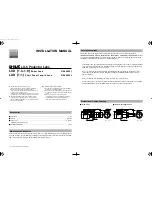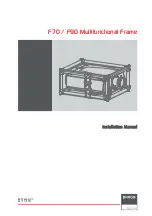
Art. No. DS 4092 TS
4.2.4.3 Disabling function for push-button and rotary knob
Disabling object and mode of action
Pushbuttons and rotary knobs can be disabled if required so that these operating elements
either execute no functions or defined functions via separate disabling functions. The disabling
function and associated parameters and communication objects are enabled if the parameter
"Disabling function" is set to "enabled" on the parameter page "push-button (PB) / rotary knob
(RK)".
The disabling function is then activated or deactivated via the 1-bit communication object
"Disable push-button/rotary knob". You can parameterize the polarity of the disabling object. In
case of polarity inversion (disabled = 0 / enabled = 1), the disabling function is not activated
immediately after a bus reset or after ETS programming (object value = "0"). There must first be
an object update "0" until the disabling function will be activated. Telegram updates from "0" to
"0" or from "1" to "1" on the object remain without effect.
The parameter "disabling function affects" defines whether just the push-button, just the rotary
knob or push-button and rotary knob are disabled similarly by a telegram to the disabling object.
The parameter and object structure of the disabling function also adjusts itself according to the
selection. The disabling behaviour for push-button and rotary knob can be configured
independently of each other.
i
An active disabling function only affects the operating functions of the push-button and/or
rotary knob. The functions of the internal buzzer of the device are independent of the
disabling function.
i
The extension inputs of the device have their own disabling functions so that these inputs
are not influenced by the disabling function of the push-button and rotary knob.
i
If the energy saving mode is used, the following should be observed:
The device will activate the energy saving mode even if the push-button and/or rotary knob
are disabled. On cancelling the energy saving mode, the device reactivates the previously
active disabling functions so that the push-button and/or rotary knob can still remain
disabled. It is not necessary here to reactivate the disabling functions after cancelling the
energy saving mode. The energy saving mode (first operation) can also be deactivated by
a disabled push-button or rotary knob. The configured operating functions (switching,
dimming...) will not be executed thereby, however.
Configuring the reaction for the push-button at the beginning and end of disabling
If the disabling function is used, the reaction of the push-button on activation and deactivation of
the disabling function can be preset separately in the parameters.
The disabling function must have been enabled in advance.
o
Set the parameter "Reaction of push-button at the beginning / end of disabling" to "No
reaction".
The push-button shows no reaction at the beginning and at the end of disabling. The
sensor only adopts the state as provided for by the "Behaviour during disabling".
o
Set the parameter "Reaction of push-button at the beginning / end of disabling" to
"Reaction as push-button on pressing" or "Reaction as push-button on releasing".
At the beginning or end of disabling, the push-button executes the function it has in the
non-disabled state. The configuration of the push-button is then executed as intended for
normal operation. The telegrams are transmitted to the bus via the communication object of
the push-button.
The following table shows all possible telegram reactions of the device depending on the
push-button functions...
Page 74 of 143
Software "Rotary sensor with extensions 10FE1x"
Functional description



































